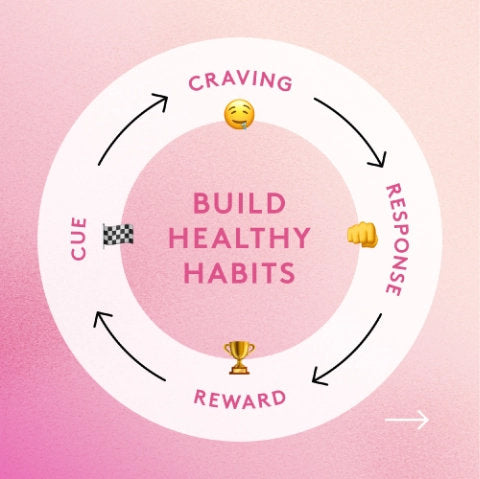Find out the factors behind hitting a fat loss plateau and how to stop it happening to you
We’ve all been there.
You try a new diet. Your weight starts dropping. And all is well with the universe.
Then, for no good reason it just stops.
The pounds that were falling off now won’t budge. It’s like the fat loss gods have turned against you overnight.
You search the internet for answers: ‘slow metabolism’… ‘starvation mode’… ‘are carbs stopping me from losing weight?’…
But the answer you're looking for is none of these things. It's actually much simpler.
In this article you’ll find out exactly what has happened and what you can do about it.
First, let’s set some foundations.
The one fundamental rule of fat burning is that we need to be expending more energy than we consume from food on a daily basis. This is known as ‘calories in versus calories out’1 (CICO).
This is absolutely irrefutable. To doubt it is to doubt the workings of the universe and the laws of physics.
However, our intake and expenditure are dynamic and influenced by hormones and other factors. So it is incorrect to blindly assume that what works for fat loss at one point in time will also work at other times.
Okay, now we’ve muddied the waters nicely, let’s think about the ‘calories out’ part of the equation. Because this is fundamental to understanding your fat loss plateau.
So what influences our ‘calories out’?
The more scientific name of calories out is ‘total daily energy expenditure’ (or TDEE). TDEE is made up of four main components2:
Resting Metabolic Rate (RMR)
This is the energy we would burn even if we didn’t do any physical activity. Think, the ultimate day of vegging out. Literally no movement or exercise, so all your body is required to do is to power your organs, brain and blood flow.
This still requires a significant amount of energy. Our brains are particularly thirsty creatures, so this equates to around 50-60% of TDEE in most people.
When we lose weight our metabolism actually lowers slightly3. This is a normal response, particularly in overweight people. Contrary to popular belief, overweight people actually have higher RMRs as their body is working to burn off excessive calories.
Losing weight means a slower metabolic rate
Even in already lean people RMR may reduce even further, but in most cases by less than 10%. It may reduce to 20%, but this is rare and usually the result of a very aggressive or low-calorie diet over a long period of time.
To put this into context, let’s say you are a 5”10 male weighing 80kg with an RMR of 1700kcal. This MAY reduce to around 1500kcal.
Would this be enough to stop you losing weight in a reasonable deficit of 500kcal a day? Probably not. But it might slow things down and eat into your calorie deficit ‘budget’.
Non-Exercise Activity Thermogenesis (NEAT)
NEAT is the energy we use doing day-to-day tasks. But - perhaps shockingly - this doesn’t include exercise. Just everything else, such as work, washing the dishes, walking the dog, even brushing your teeth.
This accounts for 20-30% of TDEE and is typically the area of greatest ‘metabolic adaption’4.
There are two main ways fat loss impacts on NEAT. Firstly, as we are losing body fat our weight lowers. Therefore, when we are moving about, we are burning fewer calories than we were previously – even though we’re doing exactly the same things.
You are basically shedding your fat backpack – which has an impact on your overall energy expenditure.
Breaking the glass ceiling of fat loss
This is one of the reasons why the average man has the capacity to lose weight quicker than the average woman. Men tend to be bigger and have a higher RMR. So during activity - even if the duration and intensity are the same – men will generally burn more calories.
Sorry ladies. But fat loss is another environment where you may have to do more than men to get the same results!
The second way NEAT may impact on weight loss is by our bodies subconsciously making us do less, especially if we are tired. This may even go so far as to fidget less, or other completely unexpected and unaccounted for ways to conserve energy.
Reductions in NEAT are often the biggest factor in people hitting fat loss plateaus.
Related Post:
Exercise Activity Thermogenesis (EAT)
This is the energy expended during exercise. For most reasonably active people this is around 5-10% of their TDEE.
Many people think exercise is the key to weight loss and use it to justify ‘eating back’ what they have burned off. But although hitting the gym can help - and is associated with lots of physique and health benefits - relying on training alone might not achieve the fat loss results you are looking for.
Thermic Effect of Food (TEF)
This is the energy we use to digest and absorb foods.
In the bigger picture this is a very small proportion of our TDEE, but there are still ‘hacks’ we can use to help the process along.
Protein rich foods have the highest TEF, so we can maximise our TDEE by sticking to a more protein-based diet during the fat loss phase.
The difference in TEF between carbs and fats is negligible (although carbs do typically have a larger TEF). As we lose weight, we obviously get a small but unavoidable reduction in TEF simply because our food intake is smaller.
All these little bits of adaptation can add up to a fat loss plateau. But now we know what the causes are, we can do something about it.

So what can we do to avoid a fat loss plateau?
In terms of RMR, there isn’t too much we can actually do. It has been suggested that planning occasional higher calorie or carb days5 can help protect against excessive drops in RMR. Although the jury is out on this one and the chances are it won’t work for everyone.
Ultimately, it is not worth stressing too much about RMR and instead focusing on maintaining and increasing NEAT to avoid laziness (whether it is consciously or subconscious).
Activity and step trackers are great for this. Although not always super accurate, they allow you to focus on and monitor the consistency of increased activity during the fat loss phase. Helping combat any reduction in energy expenditure.
Another option would be to simply reduce food intake even further - which for busy people, might be easier to manage.
Is metabolic adaption always the problem?
Before we get too caught up on adaptations that can slow rates of weight loss or lead to a plateau, there are a few other things we should consider…
Are we losing focus?
As motivation starts to decrease, old habits might start to creep in which can influence energy intake. For example, we could be tracking our food intake accurately at first but then get complacent and start to ‘eye-ball’ portion sizes.
We are notoriously inaccurate at such things. And could quite quickly and easily start eating into our calorie deficit without realizing it. Especially when eating out - where added fats and sugars can bump up calorie intake without ‘feeling’ like we are eating more food.
Have we mistaken weight loss for fat loss?
Some diets will drop water weight and bloating quickly, leading to huge drops on the scales. A bit of this might be fat loss, but if it’s running to several lbs it’s likely to be mostly water.
In this instance, what seems a plateau might just be your body leveling off - which is a perfectly normal response and not necessarily a reduction in rate of fat loss.
Is it really a plateau, or is it water weight?
Eating out frequently, consuming lots of salty food… stress… menstrual cycles… or the body simply holding extra water are all reasons that can explain several days of weight stability during dieting, before an expected drop.
It is important not to react too hastily or worry too much about day-to-day fluctuations. Look for trends over time to spot the impact that these kinds of things have on your weight. It is perfectly reasonable to gain weight for a few days whilst still losing body fat.
It’s important to take additional measurements and pictures to consider alongside what the scales are telling you. And to give you – and your body – and little time before jumping to conclusions and making changes.
Takeaway…
Fat loss is not a linear process.
Weight loss can be masked by several factors, such as water retention. And plateaus are completely normal so should be expected from time to time.
When they occur, don’t panic. Try to determine if there is something you might be doing that is impacting on your fat loss. And consider a change of eating or lifestyle habits to speed up the process.
The simplest and most effective fix is to track all activity as accurately as possible. Try to increase your NEAT.
With a reasonable starting calorie deficit, a little more activity and/ or a small reduction in calories is all you need to smash through plateaus and keep you heading towards your fat loss goals.
References
- https://www.ncbi.nlm.nih.gov/pubmed/28765272
- https://journals.lww.com/co-clinicalnutrition/Abstract/2004/11000/Variability_in_energy_expenditure_and_its.3.aspx
- https://onlinelibrary.wiley.com/doi/full/10.1002/oby.20900
- https://www.ncbi.nlm.nih.gov/pubmed/3984927?dopt=Abstract
- https://jissn.biomedcentral.com/articles/10.1186/1550-2783-11-7











